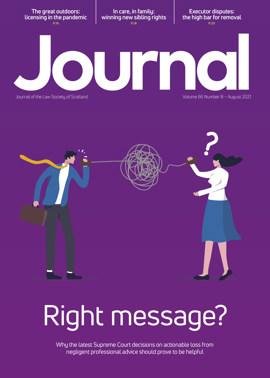Liquidated damages and the effect of termination
A Supreme Court decision on the interpretation of liquidated damages clauses has provided reassurance to the construction sector on the relationship between these clauses and termination.
Although the case of Triple Point Technology Inc v PTT Public Company Ltd [2021] UKSC 29 originated from the TCC and is supremely relevant to the construction industry, the Supreme Court judgment is in fact a decision on the interpretation of an IT contract rather than a construction one.
The contractor (Triple Point) was obliged to provide certain services relating to the design, installation, maintenance and licensing of software, and was to be paid on completion of certain milestones.
Stages one and two were completed (although late), and the following stages were never completed. The contract was ultimately terminated by the employer (PTT).
It’s a fairly common scenario to those of us working in the construction sector, so why has this decision from the Supreme Court been so eagerly anticipated?
Key issues
While there were three issues on appeal, the key issue for the construction sector was the question of whether or not liquidated damages were payable at all where a contractor was in delay at the point of termination and work remained outstanding at that point.
There were also questions raised on the interpretation of exceptions to caps on liability, including whether “negligence” means the tort of negligence or whether it includes breach of the contractual duty of skill and care, and whether any liquidated damages could count towards the overall contractual cap on liability.
The latter two issues were decided on the specific drafting of the cap on liability. However, the liquidated damages clause provided for liquidated damages to be paid for each day of delay by the contractor “from the due date for delivery up to the date [the employer] accepts such work”.
This is similar to most standard form drafting in construction contracts, including the JCT and SBCC provisions, and so the court’s decision on this issue will clearly have wider implications for the construction sector.
The appeal decision
So what happens to accrued liquidated damages (“LDs”) when the contractor fails to complete the works before the contract is terminated?
There were three possible conclusions the court could reach, all of which had been supported by previous authority:
- the LDs clause does not apply at all;
- the LDs clause applies only until the point of termination; or
- the LDs clause applies until a second contractor achieves completion.
The Supreme Court overturned the decision in the Court of Appeal and found that LDs will generally accrue until the point of termination, notwithstanding the fact that the works were never completed by the contractor and thereafter general damages would be recoverable.
It found that unless there is clear and specific wording to the contrary, the rights to LDs which have accrued as at termination will survive.
The Supreme Court also held this interpretation more in keeping with commercial reality, and the accepted function of liquidated damages, which was to provide a remedy that is predictable and certain for a particular event, such as a delay to completion – an interpretation which is likely to accord with the views of many in the construction industry.
Practical consequences
There are a number of key takeaways from this decision for those involved in negotiating LDs provisions, or caps on liability.
- If you do not want accrued rights to survive termination then you need to say so in your contract.
- General damages for breach of contract will apply post-termination. If an employer wants the LDs provision to survive until completion of the works by a second contractor, they will have to say so explicitly (although there must be questions as to whether a contractor would agree to that approach).
- Caps on liability need to be carefully drafted, as do any applicable exclusions from a cap. There are usually certain exclusions to caps (although normally only for death and personal injury). In this case, there was an exclusion for negligence (as opposed to the more common wording of “gross negligence”), which was wide enough to cover contractual breaches of the obligation to exercise skill and care. This meant these breaches were excluded from the cap on liability.
- If you have specific remedies for certain breaches of contract, such as LDs for a delay to completion, consider from the outset whether the value of these is to be included in any applicable cap or whether they should be standalone remedies which do not count towards the cap. If they are included within a general cap, take that into consideration when agreeing the level of cap.
The construction industry is likely to welcome the Supreme Court’s decision on the application of LDs clauses pre- and post-termination.
While much will turn of the drafting of the clause itself, with the similarities between the clause in dispute and those clauses found in many of the standard form contracts, the decision simply reinstates what was previously understood to be the recognised position – LDs will apply up to termination and then general damages thereafter.
The decision also brings welcome clarity on the drafting of exclusions from caps on liability and serves as a reminder to those seeking, or asking for such clauses, that care should be taken to ensure there are no ambiguities which might ultimately make the cap redundant.
Regulars
Features
Briefings
- Criminal court: Sentencing deconstructed
- Family: Litigation and lottery wins
- Human rights: Reinforcing the right to be forgotten
- Pensions: Plugging the LGPS exit credit hole
- Criminal law: The future of sexual offence trials
- Scottish Solicitors' Discipline Tribunal
- Property: Heat networks: the key to low-carbon heating?
- In-house: Power of the nudge






